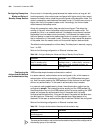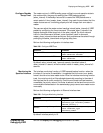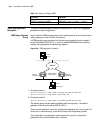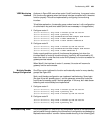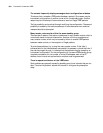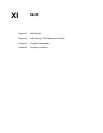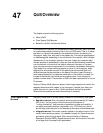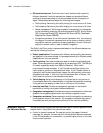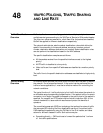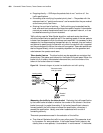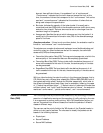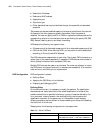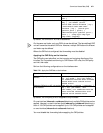
664 CHAPTER 47: QOS OVERVIEW
■ Differentiated service: This is is a kind of multi-service model oriented to
different demands. It sorts the services into classes, and provides different
qualities of services according to the various classes without the support of
signal. Differentiated service adopts the following technologies:
■ Traffic policing: Performing the traffic policing for one or more or all flows.
■ Traffic shaping: Performing the traffic shaping for one or more or all flows.
■ Queue management: Performing congestion management for the queues
on the interface by employing the technologies such as FIFO, Priority Queue
(PQ), Customized Queue (CQ), Weighted Fair Queue (WFQ), Class-based
Weighted Fair Queue (CBWFQ).
■ Congestion avoidance: It is a traffic control mechanism that, by monitoring
the usage of the network resources (such as the queue or memory buffer),
removes the network overload by dropping packets on its own initiative to
adjust the network traffic in case of network congestion.
The QoS of the 3Com router is implemented based on the differentiated service,
and has the following functions:
■ Packet classification: The services with different service quality requirements
are classified in the network edge. It is processed according to different packet
classifications in the core network.
■ Traffic policing: Two token buckets are used to indicate the allowable burst
levels. Tokens are placed into each bucket at the same rate (CIR). The CBS (the
C bucket) is generally smaller than EBS (the E bucket). When traffic
conformance is being evaluated, if the C bucket has sufficient tokens, the
traffic is said to conform to allowable burst levels. If the C Bucket is short of
tokens but the E bucket has sufficient tokens, the traffic partially conforms to
allowable burst levels. If both the C and E buckets are short of tokens, the
traffic does not conform to the allowable burst levels.
■ Traffic shaping: Performs the shaping on the flows that do not conform to
the predetermined traffic characteristics, to facilitate the bandwidth matching.
It may perform the shaping on each flow or all flows on the interface.
■ Interface Line Rate: Provides a management approach to the network
bandwidth by limiting the physical interface bandwidth.
■ Congestion management: Provides various queue mechanisms to relieve and
dispatch the congested packets when the interface congestion occurs.
■ Congestion avoidance: Takes measures to avoid the congestion by estimating
the congestion status of the network. The congestion avoidance may reduce
the packet loss ratio and improve the efficiency of the network availability.
Benefits of QoS for
the Network Service
QoS can provide controllable and predictable services for network applications and
network traffic. Using QoS in the network can realize:
■ Control of network resources. The user can control the usage of network
resources. For example, the user may limit the bandwidth resource consumed
in the FTP transmission on a connection, or provide higher priority for the data
that are more important.



